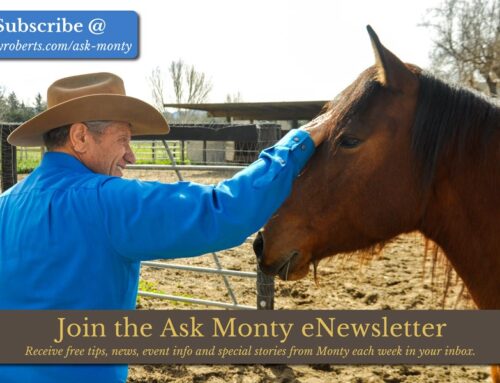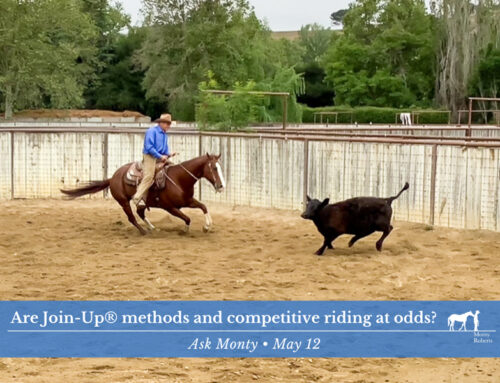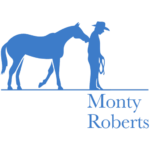December 9, 2020 – Ask Monty Newsletter
Question: How do you breathe so your horse will relax?
I have read statements that you have made about how breathing is utilized by the horse in communicating with human beings. Could you please explain what you mean by that and does the horse really hear me and should I pay attention to his breathing as well? Thank you for any help you can give.
Noreen
Monty’s Answer:
Dear Noreen,
Breathing is one of the most critical elements available to the human being when communicating with Equus. While we humans tend to be unaware of the breathing of our horse, Equus can read our breathing from as much as 200 meters of distance between us. The audible factor is far less important than the factor of ‘core relaxation’. I will define core relaxation as being related to the diaphragm muscle at the bottom of the human rib cage. While the horse has a diaphragm muscle, their body being parallel to the ground requires that the muscle is in a vertical position. Since the human is upright, the diaphragm is horizontal with the standing human.
This muscle is critical to the communication with Equus as it controls the communication with horses where the sensitivity of breathing is concerned. As we stand, the diaphragm muscle can be rather flat just below the lung. As we learn to relax our core, that muscle tends to sag and move downward well into the intestinal cavity. When that happens the consequences are that there is much more space in the thorax area reserved for the lungs and heart.
When the lung and heart have more space, two behavioral traits are experienced. The first one is that the lungs have the opportunity to take on more air. Each of the little sacs that contain the air we breathe become larger with the added space. In addition, the walls of the alveoli sacs become thinner as this tiny object expands. The thinner walls allow for air to move more easily into our blood stream.
With more oxygen our heart is required to pump less often while still providing our body with sufficient oxygenated blood. The soft relaxed core is instantly noticed by the flight animal and will be regarded as a part of a relaxed human without violent intent. The horse therefore is more relaxed and more accepting of the human movements.
It is only now that I can teach these elements to my students. I have worked with wild deer for 47 years and they have allowed me to learn what constitutes acceptable behavior between the flight animal and the predatorial animal called human. I am now able to do with wild deer what most University professors will state is impossible.
One might ask, “Why did it take you so long to learn this?”
My answer would be that I’m only 85 and it seems to me that on one else has learned it, so I learned it this quickly.
Sincerely,

Read the full newsletter: How do you breathe so your horse will relax?




